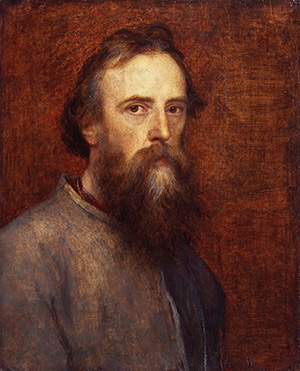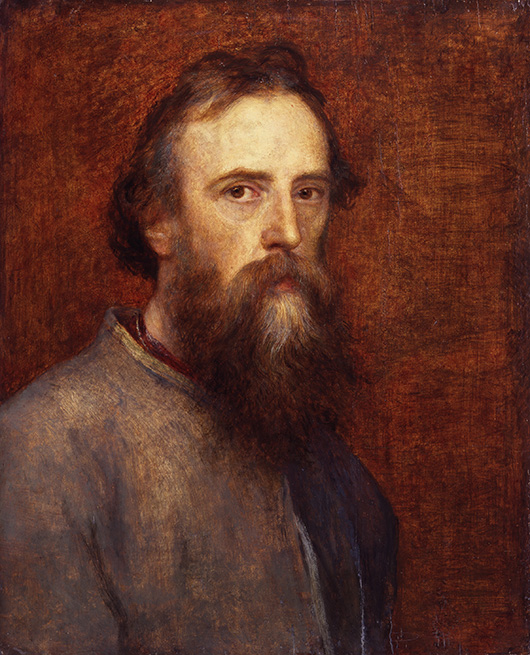
The nine-month project has included the transcription of 1,446 letters and notes written to, or received by, Watts. The collection reveals the professional and personal relationships of one of Britain’s most significant artists, providing an invaluable source of material for researchers, students and those with an interest in British art in the 19th century.
Watts is celebrated for his portraits of eminent Victorians, known as his “Hall of Fame” series, and the letters in the collection, held in the Gallery’s Heinz Archive and Library, reflect the impressive artistic, political, academic and social circles in which he moved. From his London residence, Little Holland House, where he lived with the bohemian Prinsep family, Watts corresponded with the Victorian elite and counted many “celebrities” of the time his close friends, including William Ewart Gladstone, Dante Gabriel Rossetti, Alfred Tennyson, John Everett Millais, Cecil Rhodes, Cardinal Manning, Julia Margaret Cameron and James Martineau.
Other highlights of the collection include letters revealing the ideas behind his magnificent symbolist paintings; hundreds of letters between Watts and his art supplier, Winsor and Newton, detailing the secrets of his artistic practice and unusual techniques; and correspondence regarding his exhibitions, including one of over 200 of his works in 1881-82, which was the first ever retrospective of any living British artist, and another in New York in 1884-85. Other letters of interest record appointments for sittings, social engagements and his physical health.
The letters were compiled by Watts’s second wife Mary Seton Watts (1849-1938) following her husband’s death, in preparation for her biography of him, published in 1912.
The Heinz Archive and Library of the National Portrait Gallery, London, documents the history of the institution and its activities, and is the leading center for research in the field of British portraiture. It also includes archive collections acquired from external sources, including the papers of key portrait artists and art historians. The Watts Collection is one of the most significant of these collections.
George Frederic Watts is considered one of the greatest artists of his age, internationally renowned and celebrated in his own lifetime. He pursued an individual approach to painting and sculpture and pushed the boundaries of Victorian art. As well as his portraits of his distinguished contemporaries in Victorian society, Watts was known for his large allegorical works of art with strong moral messages to educate and improve society. In artistic terms he is significant not only because of the works he produced, but because of his determined innovation in developing an artistic practice which was not tied to a larger artistic movement.
The online catalogue of Watts’s correspondence is available at http://archivecatalogue.npg.org.uk/. An online resource detailing Watts’s life and art, accompanied by extracts from the catalog, has also been created. Please visit www.npg.org.uk/research/archive/archive-journeys.
ADDITIONAL IMAGE OF NOTE


